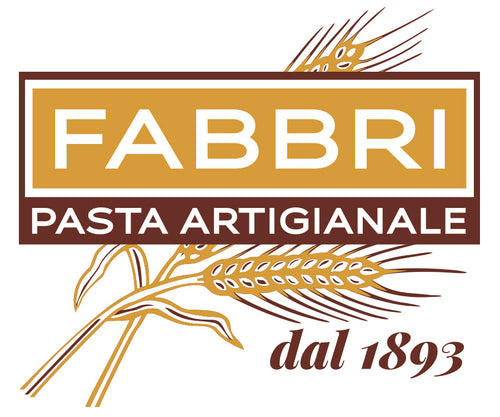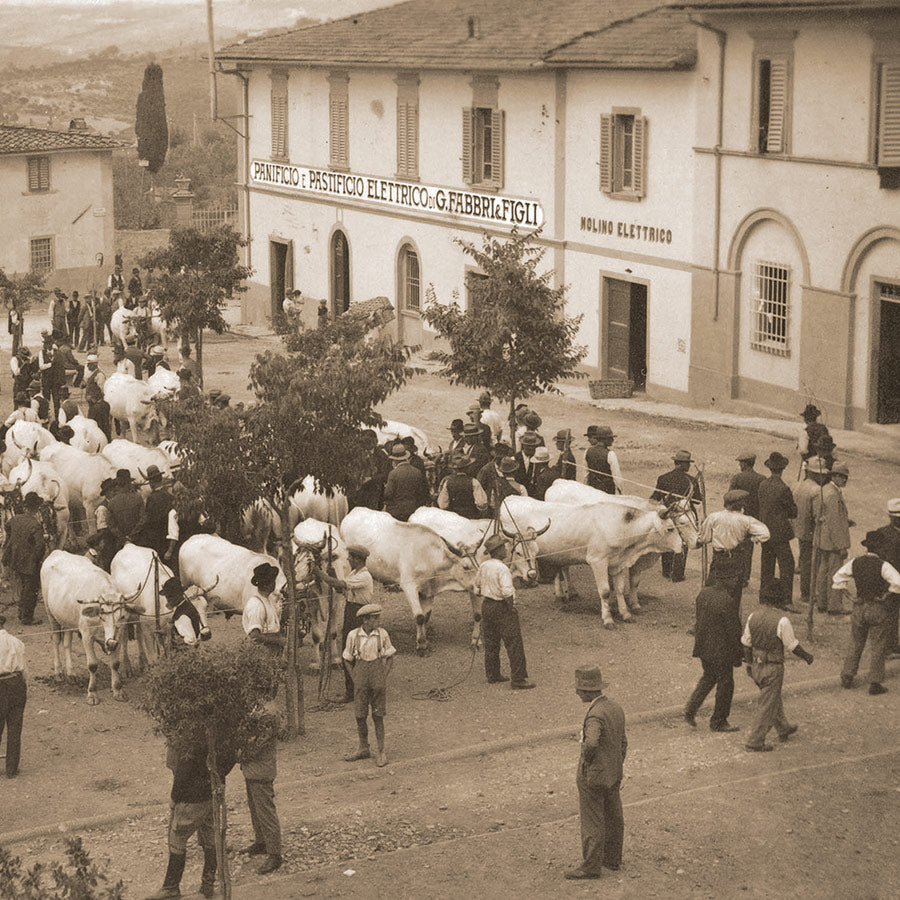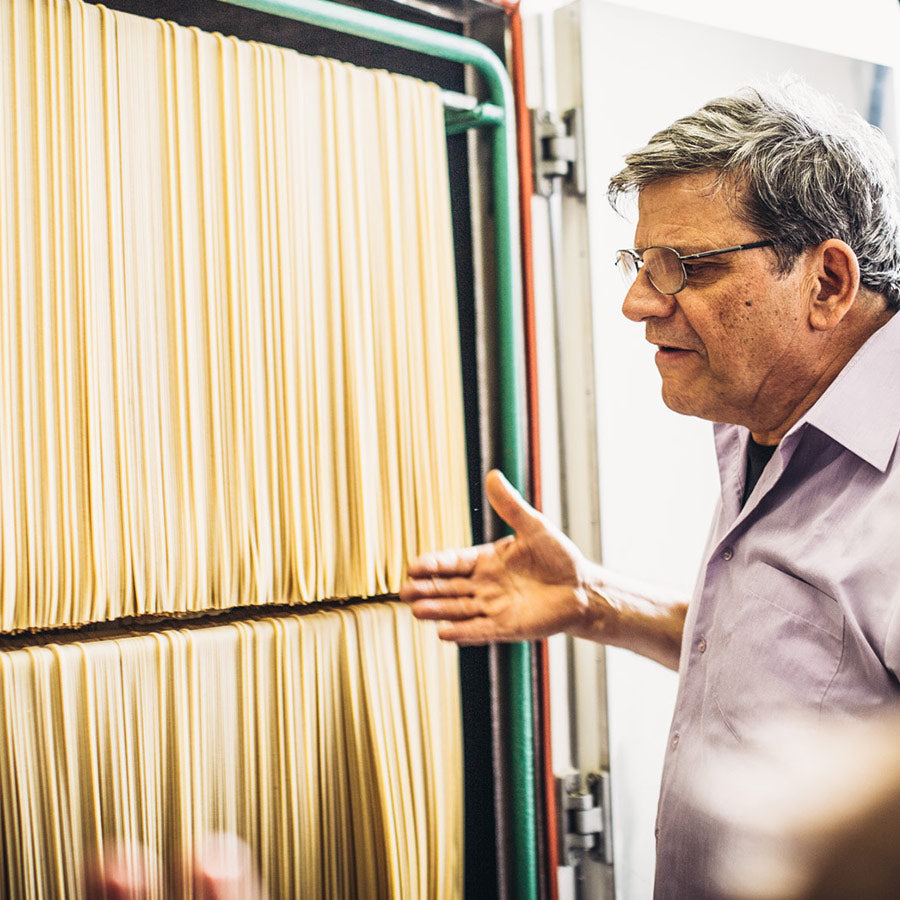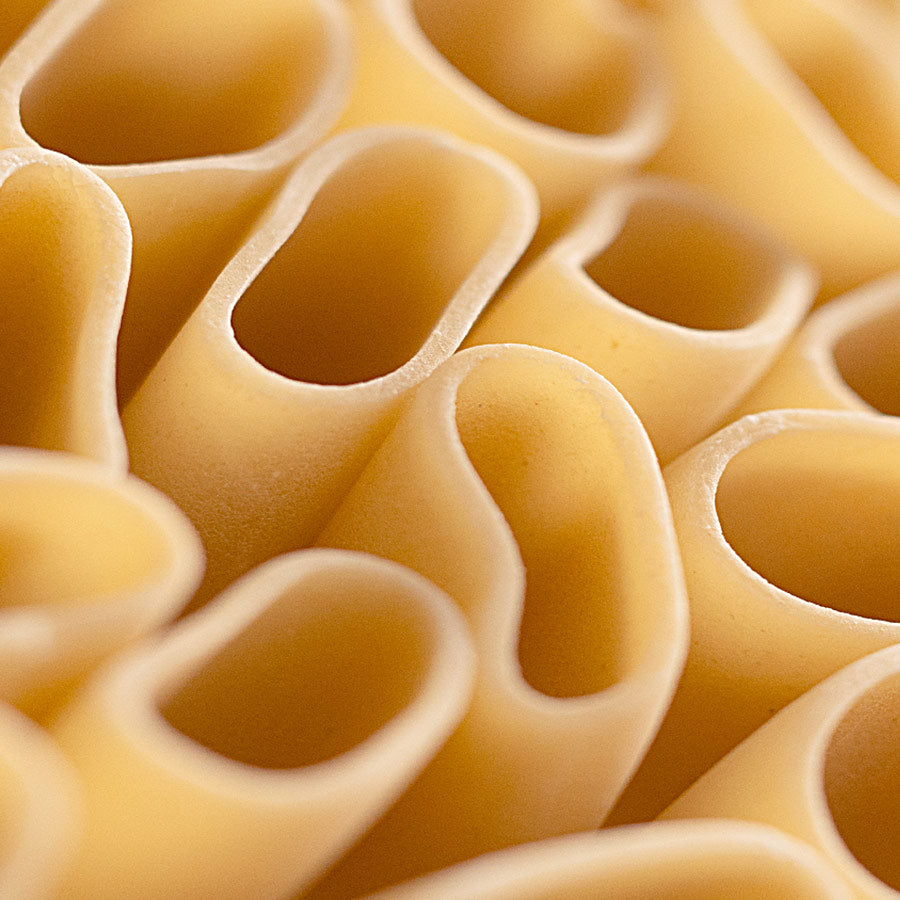How is spaghetti made?
Have you ever wondered how spaghetti is made before it is packaged?
In an artisan pasta factory, the production process for long pastas involves six steps.
Kneading
The process begins inside tanks known as kneading machines where water and durum wheat semolina are dosed and slowly mixed.
Once these two elements begin to mix, gluten and starch are created, giving rise to the dough.
The key is to be able to create a homogeneous mixture without damaging the substances therein. The kneading step can take up to 20/25 minutes for this precise reason.
The temperatures recorded inside the tanks never exceed 38°C. This is essential in order for the next step to be successful.
Drawing
Once the dough has reached the proper homogeneity, it is pushed through a compression screw towards the die or mould.
The die is the element used to generate the pasta, giving rise to a certain shape depending on the shape of the slots on its surface.
The production continues and the spaghetti move on to the pre-drying tunnel.
Pre-drying
The pasta is pre-dried in this step, meaning the outer surface is slightly dried, so that its shape does not change further.
It is no coincidence that pre-drying is also called the ‘wrapping‘ step, referring to the outer part of the dough.
However, remember that the pasta is still fresh in this step. Only subsequently will a dedicated process allow its final drying.
Drying
The objective of this step is to remove the water within the pasta in order to obtain the dry product.
To do this, the spaghetti must be placed inside special drying cells.
We have five active cells at the pasta factory that allow us to dry the pasta slowly, never exceeding 38°, without creating cracks on its surface.
More importantly, this type of processing does not distort the organoleptic properties of the semolina, leaving the gluten and natural starch unaltered.
Hence the pasta will be very digestible because its production time is long: 3 to 6 days, meaning the pasta remains in the drying cells up to 144 hours.
Cutting
After 5/6 days drying, the spaghetti is ready to be cut to a standard length.
This procedure is carried out by the stripping-cutting unit, the machine that cuts the spaghetti in exactly two places: at the top and in the middle.
As soon as it is ready, the spaghetti is loosely placed inside cartons covered with a protective coating. Now it is ready for the last step: packaging.
Packaging
The operator manually takes a handful of spaghetti from the cartons and places it on the scale of the packaging machine.
Once the right quantity is reached, the 500 g of spaghetti are pushed into the package, sealed and stamped with the expiry.
At this point a conveyor belt attached to the packaging machine moves the package to the outside where labels are still applied to the package by hand.
















